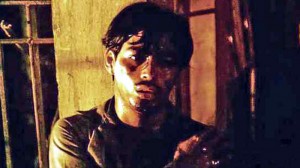It’s been 120 years since Thomas Edison introduced the movie camera in 1893. In the US, the 16-year-old National Film Preservation Foundation was put up to support activities that preserve films and “improve access for study, education and exhibition.” Of the American feature films produced before 1950, only about half of them still exist. Can we say the same thing about our movie classics?
In the Philippines, more film practitioners and enthusiasts are supporting efforts to preserve our cinematic heritage, because film, whether in documentary or feature-length format, effectively documents the Filipino way of life.
ABS-CBN’s note-worthy efforts to restore, remaster and re-release “Himala” deserve commendation for reintroducing Ishmael Bernal’s 1982 classic to a new generation of cineastes.
The restored version of “Oro, Plata, Mata,” shown in theaters last week, isn’t as pristine as “Himala,” but, except for its protracted opening party scene, the power of Peque Gallaga’s three-hour-plus World War II saga has stood the test of time.
Further boosted by an outstanding cast that includes Manny Ojeda, Joel Torre, Liza Lorena, Sandy Andolong, Cherie Gil, Mitch Valdes, Fides Cuyugan-Asencio, Lorli Villanueva, Ronnie Lazaro, Mary Walter, Manny Castañeda and Mona Lisa, Gallaga’s superlative 31-year-old drama remains a timeless moral provocation—and a gritty reminder of our checkered colonial past!
Lost-and-found docu
At last year’s Cinemalaya, we heard great things about ace cinematographer Romy Vitug and producer-editor Bibsy Carballo’s 17-minute lost-and-found documentary, “Recuerdo of Two Sundays and Two Roads That Lead to the Sea” (narrated by Ray Pedroche), screened last week at the Tampere Film Festival in Finland, along with Lawrence Fajardo’s “Amok,” Paolo Villaluna’s “Margin,” and a string of Raymond Red’s pioneering shorts, including “Ang Hikab” and 1982’s “Ang Magpakailanman.”
Recently, we were gratified to view Vitug and Carballo’s 1969 paean to Navotas and its “fisherfolk who celebrate life and death with small talk, music and rituals of burial in a cemetery by the sea.”
The film isn’t just about Navotas, however—it vividly recalls another part of our history that’s been gobbled up by time and technology.
Written by Eric Torres, with music by Michael Dadap, “Recuerdo’s” images don’t tell specific, linear tales, but the historical vignettes it presents—from the tattered ads of Dolphy’s “Buhay Bombero” and Chiquito’s “Agent Wen Manong” to the 30-minute trip that its filmmakers took to get to the Luzon Slipways and Dry Docks in Malabon—transport viewers to a way of life that, while it no longer exists, has been immortalized on film. Its telling, crisp images will always remind us of the simplicity and uncomplicated beauty of our “unwired” past.
“Recuerdo’s” provocative musings on life and death remind us of the social mores and rituals that helped inform our formative years in Southern Mindanao. We hardly see Padada, our beloved hometown, anymore, but Vitug and Carballo’s film inspires us to look back, reminisce—and be grateful. Let’s have more of these “lost and found” gems, please!
